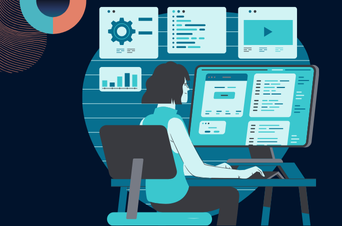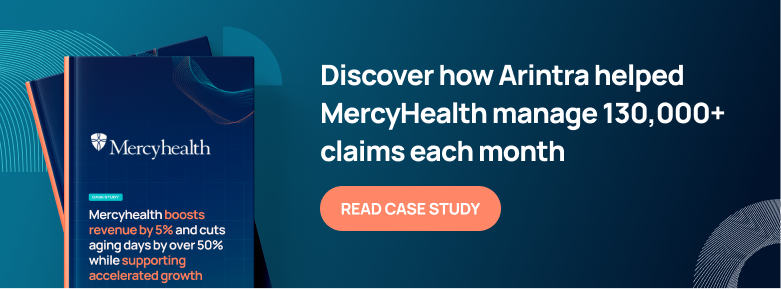Medical Coding AI: A Quick Guide


Medical coding has always been a sophisticated yet mission-critical aspect of healthcare operations: connecting clinical care, compliance, and reimbursement. But as increasing chart volumes, chronic staffing issues, and mounting administrative pressures test the systems, traditional coding practices are reaching their breaking points. Meet Medical Coding AI: a GenAI solution that reimagines coding from time-consuming holdup to accuracy accelerator, efficiency booster, and revenue guarantor.
In this fast-paced guide, we'll break down what medical coding AI is, how it's transforming revenue cycle management, the primary advantages it provides for providers and coders, how to select a vendor, and how the future of coding is changing with AI. If you're new to automation or considering next-generation solutions, this guide will assist you in seeing how AI can enable your coding team, enhance compliance, and future-proof your revenue cycle.
What is Medical Coding AI?
Medical coding AI is a general term that encompasses any kind of AI-powered coding solution. Most often, these are solutions built on generative AI (GenAI) and large language models (LLMs).
Medical coding AI solutions vary in capabilities, with functionality spanning from processing structured data (critical information from electronic health records) and inputting it into the right fields, to interpreting unstructured data (physician notes) and mapping them to the corresponding medical codes.
Regardless of functionality, medical coding AI exists to streamline workflows, reduce the burden on coding specialists, and ultimately allow healthcare organizations to do more with the team they have.
How is AI Used in Medical Coding?
Day-to-day medical coding encompasses a number of tasks, requiring that specialists translate physician diagnoses and any procedures into sets of codes. On top of this, medical coders will often handle insurance claims or any escalations that arise during the claims process. Current medical coding AI is capable of handling much of this, including
- Pulling relevant visit information for claims
- Assigning proper medical codes to procedures or diagnoses
- Flagging common errors and recurring errors
- Staying on top of regulatory updates
On top of the above, some medical coding AI software is also capable of learning and identifying trends. This can enable your coding team to forecast potential challenges, updates, and more.
How Artificial Intelligence is Transforming Revenue Cycle Management?
Effective revenue cycle management encompasses everything from front-end processes to the back, making it a colossal undertaking. Because one of AI's chief functions is streamlining workflows and improving overall efficiency, it's capable of having an overarching impact on revenue cycle management as a whole: AI is already handling claims submissions, assisting with denials management, and taking on prior authorization.
Now, with fully autonomous medical coding that goes well beyond computer-assisted coding (CAC), healthcare orgs can leverage AI to drive:
- Higher revenue capture: Reduced blind spots and sloppy mistakes can result in a 5.1% average revenue uplift
- Reduced costs: Less coding backlogs and more efficient coding audits can accelerate cashflow
- Less provider burden: Less "pajama time" spent on administrative tasks means physicians can focus on patient care
- Improved compliance: Modern AI can produce clear audit trails, resulting in improved financial oversight and stronger payer negotiations
With modern AI, coding can transform from an operational bottleneck, into a strategic lever that enables long-lasting revenue assurance, smoother workflows, and an overall boost to your revenue cycle management efforts.
Top 6 Benefits of Using AI in Medical Coding
Medical coding AI doesn’t just automate coding processes, it goes beyond this. Proper AI in medical coding can deliver a number of soft and hard benefits.
1. Increased value from your team
Even if your coding team is fully-staffed, without any kind of AI or automation in place you have specialists that are inevitably doing busywork. With medical coding AI, you can streamline common coding tasks and busywork, freeing your specialized coders up to work at the top of their skillset.
As an added bonus, with the extra time your team gets back, you can train less-experienced coders. They benefit from upward mobility, you benefit from a more talented team.
2. Improved accuracy
The right medical coding AI is highly accurate, reducing sloppy errors and improving overall CPT coding accuracy. (Arintra automation codes at 96% accuracy!)
3. Accurate reimbursement
With the increase in productivity and accuracy, healthcare organizations and patients alike benefit from more accurate billing and thus, more accurate reimbursements.
4. Enhanced forecasting abilities
AI can identify trends, helping you determine staffing needs and more accurately forecast, which has a ripple effect on your finances.
5. Strengthened revenue assurance
With coding accuracy improved and more accurate reimbursements, your organization can prevent revenue leakage and improve overall revenue assurance efforts.
6. Reduced burnout
Staff burnout is a real concern, especially with coders being difficult to hire. Streamlining mundane coding tasks can improve the wellbeing of your existing coders.
For proof, look at how Arintra helped MercyHealth achieve a 5.1% revenue uplift, automate the equivalent work of eight full-time employees, and more.

What to Look for in an AI Medical Coding Software Vendor?
There are an increasing number of AI medical coding software vendors available. While many are comparable in capabilities, others are fine tuned for certain tasks or simply less able than others. Because medical coding AI is an investment, it’s essential you make the right choice before diving in.
Does the vendor have a GenAI Native Platform?
Many medical coding automation platforms aren't actually AI, but instead run on computer-assisted coding (CAC) or basic machine learning. Others have updated their offerings, adopting large language models (LLMs) or natural language processing (NLP). While this is an improvement, these types of solutions can still have limitations because of their architecture.
Arintra is a GenAI native platform, built from the ground up on GenAI and LLMs, rather than retrofitted with legacy rules holding it back. This gives our platform human-like fluency with clinical language, allowing it to easily transcribe codes, synthesize unstructured and structured data, and apply deep coding logic in real-time at scale.
How does the vendor integrate with your EHR?
Proper EHR integration is crucial when picking a coding solution. Some medical coding AI platforms will only function with a particular EHR, while others are more limited in their integration. This can put more work on your team as you try to onboard, or require tons of manual clicking and back and forth.
Arintra offers direct integration with major EHR platforms, from Epic to Athena. With seamless access to required data, Arintra can code with extreme accuracy and without input from your team, while preserving data provenance.
How advanced is the vendor’s technology in regards to Contextual Clinical Knowledge?
Contextual clinical knowledge is essential if an AI solution will ever go beyond simple medical coding workflows, and instead handle complex piece of unstructured data (such as free-text notes).
Arintra utilizes a library of specialized reasoning agents, each built to interpret different pieces of the coding process or clinical concepts. This allows Arintra medical coding AI to interpret free-text notes, map symptoms to conditions, resolve any clinical ambiguity, and even identify patterns pertaining to payer rules or denial trends.
Because Arintra uses an agented approach, it can also adapt and update quickly. For instance, if guidelines update, reasoning agents associated with those are the only ones that need to be updated.
The Future of Medical Coding with AI
As AI becomes more capable and pervasive within medical coding, it’s only natural that the landscape itself will change. But, what does this future look like?
- Increasing chart volumes: Chart volumes will likely continue rising, especially as the larger generations continue aging. This will result in a higher demand for AI, as it’s not an issue one can hire their way out of.
- Ongoing staffing challenges: While the medical coding role itself is positive, turnover is always an issue. With increasing chart volumes and care demands, it will be near-impossible to secure necessary staff for the future.
- Coding as a testing ground: AI is currently used little in the back-end area of healthcare. Coding is the perfect testing ground, so expect to see many in this field help spearhead AI’s push into more back-end processes as the tech grows in capabilities.
- A larger focus on care: As AI takes on more and more of the mundane work, people will be freed up to focus more on care and human-related matters. For coders, this could mean more time spent on complex cases.
- Emphasis on change management: With every task AI streamlines, people reclaim precious time that can be used for more. This makes change management more important than ever for those in leadership roles, a trend that will replicate itself in coding.
In the words of Nitesh Shroff, co-founder and CEO of Arintra, in the future, “AI is no longer a headline, it’s the trusted infrastructure powering efficiency, accuracy, and human-centered healthcare.”
This still leaves one elephant in the room.
Will AI Take Over Medical Coding?
It’s impossible to discuss AI and not have concerns around whether it will take over said profession. While AI in medical coding is already taking on numerous pieces of the role, it’s nowhere near taking on the entire role, nor will it ever.
Healthcare is human by nature, and being so, it’s unpredictable. No two patients are exactly the same, and neither are any two charts. There will always be a need for human medical coders, whether they’re helping quality-check the work of AI and automation, tackling complex cases, or serving in change management roles.
The future of medical coding is one of AI and human expertise. And as a GenAI native revenue assurance platform, built by the best in coding and healthcare, Arintra is here to help you usher in this more efficient future.
Speak to our experts and see how Arintra can help you do more with the team you have — today and for years to come.









